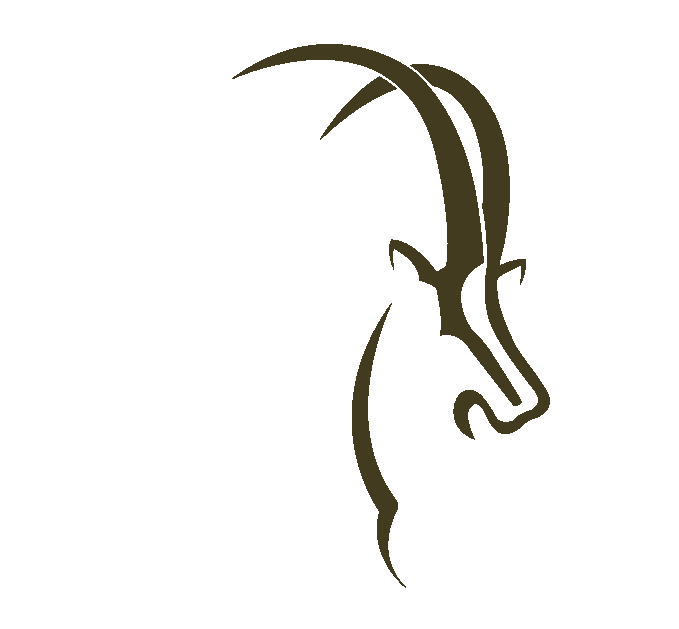ROAN ANTELOPE (HIPPOTRAGUS EQUINUS) IN BREEDING CAMPS
- Dr. Louis Greeff (BVSc)
- May 18, 2016
- 7 min read

Roan are the second largest antelope in Africa and being herd animals they are generally found in groups of between 12 and 20 breeding animals. The younger bulls (between the ages of two and four years) form bull herds, whilst bulls who are older than four years of age will establish territories and lead a solitary life.
These animals’ are seasonal breeders with their natural calving season occurring between the months of May and July. However it is common that if these animals receive supplementary feeding, calving could occur throughout the year. Heifers are sexually mature at the age of sixteen months and may calve as early as twenty-four months.
Roan is extremely highly-strung animals, far more so than for example sable antelope, and will tend to run as soon as one starts working with them; however they will generally stay together in a herd. Adults (both cows and bulls) tend to be exceptionally aggressive, especially if you interfere with their calves. Roans do not normally lie still when immobilised and they will most often require extra tranquilizers in order to control them.
Roan antelope have a sense of smell which is very sensitive to any abnormal odours.
Roan are primarily grazers, but can be opportunistic browsers, especially in times of drought. Caution must be taken when feeding these animals as they tend to over eat, if food is provided spontaneously and not in an organised manner.
Roan are very susceptible to pulmonary infections and tick-borne diseases (such as Theileria). If they are confined to small camps and fed high protein diets their hooves tend to grow tremendously.
Management:

Social:
Roan are herd animals with a very set structure, they do not tolerate new introductions and will easily expel individuals with health problems or individuals that they don’t like. An ideal herd size is 15 breeding females with one bull.
Roan is intolerant of other species, especially species that compete with them at the feeding place. For example roan and sable in the same camp are incompatible at the feeding place, as are wildebeest and roan or impala and roan as they are in direct competition for grazing. Nyala, being a shy species, can sometimes be compatible provided the nyala bull ratio in the camp stays low. The best practice would be to ensure that Roan is managed in their own camp without having to share their space and resources, with other species.
Roan calves tend to stay together in a crèche. The calves of the previous year (especially heifer calves) tend to be the guardians of the crèche. By leaving heifers of the previous year in a breeding group the success rate for raising calves improves. Small calves tend to feel more secure and less stressed when there are older calves around.
When weaning bulls at the age of fifteen months they can be put together in a bull camp. They will usually stay together until the four years of age. After the age of four they tend to become solitary. When kept together at ages above 3 three years they fight tremendously, this must be kept in mind when camps are designed. After three years of age roan bulls do best on larger pieces of land.
Rotational grazing:
It is very important to rotate roans between camps. This ensures optimal grazing all year round and decreases the tick burden in camps.
Rotational grazing program:
Rotate camps from the beginning to the middle of March. Rotate other species into the camp which the roans were moved out of to trample the grass in the camp and to pick up ticks. This ensures that the tick load is decreased. A good example would be to move cattle into such a camp. The cattle must however only be in the camp for a short period of time. Let the camp then rest for the rest of the year and rotate the roan back into the initial camp in the March of the following year. With this method of camp rotation the camp gets enough rest to establish good grazing for the new rotation year. Cold winters and scarce vegetation also decreases tick loads.
Diseases:

Theileria
Theileria is a Tick-borne disease transmitted by the brown ear tick (Rhipichepalis spp). It causes acute death in these animals, especially calves. Prevention is better than cure.
The following protocol is suggested for small calves:
Step One:
On day 2 or 3 after the birth of the new calf:
Microchip the animal and treat with 2ml Engemycin, 2ml Oligo, 5ml Deadline Extreme between the front legs, the back legs and on the stomach. To achieve this, the calf must be held upside down. The ears must also be wiped with a cloth drenched in Deadline. It would also be helpful to shave a number on the calf’s hind leg with an electric clipper, these aids in identifying the calf for monitoring purposes.
Step two:
When the calf joins the herd at two weeks of age:
It is recommended that the animal is darted and treated with Engemycin, Oligo and Vitamine K. Dip the animal as recommended in step one with Deadline. The calf should also be tagged during this capture, it is old enough to force itself onto its mom to drink if there is any rejection from the moms side with regards to the ear tag. If the calf is tagged at a younger age, it might not be strong enough to ensure that it gets sufficient milk from the mother if she potentially rejects it due to the new ear tag.
Step three:
After two weeks repeat step 2, but vaccinate the calf with One shot Ultrachoice 7. This protocol works well for areas where brown ear ticks are a problem. In areas where the ticks are not a problem it is recommended that only Step one is followed and Step two takes place at the age of 3 weeks.
Lung diseases
Roan is very susceptible to Pneumonia. It has been implicated that PI3 and BRSV are the biggest culprits when it comes to lung diseases in roan. Pasteurella or Manheimia also play a role in causing severe losses of these animals. A good, balanced nutritional program will usually prevent these infections. It is recommended that you use One Shot Ultra to vaccinate calves. If it is suspected that an animal is infected by a virus, it is recommended that all animals in the herd are immobilized and treated with anti-inflammatories and florfenicol as well as tetracyclines. The tetracyclines should be given intravenously to accomplish therapeutic levels immediately (florfenicol) has longer lasting abilities).
Acidosis/Vitamine B1 deficiencies
Roan will sometimes get a condition where they show nervous symptoms. They walk in a disorientated manner, show weakness in their hindquarters, stargaze, fall right over their backs etc. Signs to look out for are bloody diarrhoea and a rumen Ph of below 5.
These animals respond well to Vitamin B1 supplementation and Penicillin therapy as well as rumen buffers. Always ensure that the concentrate mix fed to roan antelope is buffered.
Clostridial diseases
Roan are very susceptible to Clostridia, especially intestinal Clostridia Species. They are notorious for loving their food and therefore any sudden nutritional changes will put them at risk of contracting Clostridia. It is very important when feeding, to make sure that there is enough feeding space for all the animals. It is also very important to give the same food and the same quantity every day. The following vaccines are recommended to vaccinate roan:
Ultrachoice One Shot 7: This vaccine is used to vaccinate animals of all ages (Adults, sub adults and calves) with dropout darts. It is not a tissue irritant and does not cause sterile abscesses at the dart site or abnormal lumps on the animal.
Covexin 10: This vaccine is used to vaccinate animals when immobilized. The vaccine must be deeply injected intramuscularly.
Internal parasites
Haemonchosis is a large threat to roan. Liver tapeworm (Stilezia Hepatica) is a threat especially in sandy, dry areas of our country. Roan is also affected by Tapeworm infestations in certain areas, but other strongyle infections might also occur.
It is very important to use a holistic approach in these species to combat the problem. All possible resources must be used to manage this.
Accurate Mcmaster egg counts must be done and samples should be sent away to Onderstepoort for identification. Mcmaster egg counts should be done every two weeks in Summer time in intensive breeding systems and twice a year in extensive systems. Mcmaster counts are only a relative way to estimate the infection rate but can at least it gives an indication and are simple to do.
The recommended approach to manage internal parasites is as follows:
Rotational grazing system
Deworm a week before the animals are rotated to a new camp. Move the feeding troughs to the gate of the new camp and then deworm. This is to help combat reinfection during the seven day period.
Diatoms
If possible use diatoms in feed for only a few days during the month, it definitely helps.
Dung collection
Pick up dung around feeding place regularly (usually once a month) and send dung samples to Onderstepoort.
Feed trough management
Move feeding troughs regularly and clean the water and feeding troughs once a week.
Chemical intervention
The following deworming remedies are recommended:
Panacur
Ivermectin
Closantel (Prodose Orange, Maxicare)
Levamizole
Derkwantel (Startec)
Monopantel (Zolvix)
Niclosamide
Prazikwantel
Take caution when administering the above mentioned remedies. The exact dose should be worked out scientifically and administered with food or water.
The following calculation and administration is recommended:
Step one:
Work out biomass:
10 Adult Roan 10x300kg =3000kg
Step two
Dosage on Bottle
2ml/10kg
Step three
3000kg/10kg =300x2ml =600ml prescribed dose
Step four
600mlx25% = 150ml
Total dose thus 750ml
Step five
750ml/2days =375ml/day for two consecutive days.
The reason for adding 25%, is to ensure that the animals get the correct dose. When mixing worm remedies into feed a part of the mix gets lost. It is vitally important to make sure the previous worm mix has been eaten up before the second day’s mix is given to the animals. Calves younger than four months are not included into these calculations. When using water make sure the worm remedy forms a suspension in the water and not an emulsion.
Recommended management program:
January
Last week of month
Take out breeding bulls
February
Sell excess females that are pregnant
March
Beginning to middle
Rotate camps
Middle to end
Put other species in original camp to trample and to pick up ticks
April
From 20th
Cows start calving
May
Cows calving
June
Cows finish calving
July
Beginning
Wean bulls and perhaps heifers from previous year
Middle
Put breeding bulls with herd
August
Breeding season
September
Breeding season
End
Scan few cows for pregnancy
October
Mcmaster counts
November
Mcmaster counts
December
Mcmaster counts




















































Comments